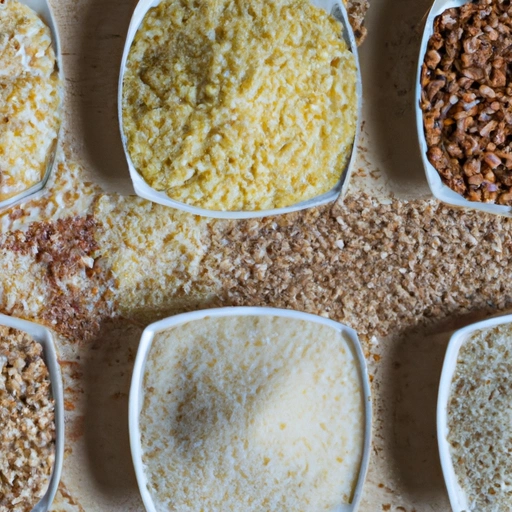Cereal
Description

Cereal, the edible components of grain plants, constitutes a staple food in various diets worldwide, providing essential nutrients and energy. These grains are harvested from cultivated grasses and include popular varieties such as wheat, rice, corn (maize), oats, barley, rye, and millet. Cereals are consumed in many forms, from whole grains to processed flours, and are foundational in countless recipes. Their adaptability makes them suitable for a wide range of dishes, catering to both traditional and modern tastes.
Common uses
Cereals are commonly used as breakfast foods, ingredients in baked goods, and as the basis for many side dishes. They're also utilized as thickeners in soups and stews, and as a source of malt in brewing. Additionally, cereals find their place in the production of snack foods, such as granola bars, and as feed for livestock, further highlighting their versatility.
Nutritional value
Calories
Typically, 100 grams of cooked cereal grains contain approximately 100-150 calories (418-627 kJ), depending on the type of cereal and the preparation method.
Protein
Cereals generally provide about 2-7 grams of protein per 100 grams, with the exact amount varying by grain.
Fat
The fat content in cereals is usually low, with most having less than 2 grams of fat per 100 grams.
Carbohydrates
Carbohydrates are abundant in cereals, ranging from 15-30 grams per 100 grams. This includes both simple sugars and complex carbohydrates, which serve as a primary energy source.
Vitamins
Cereals can be a good source of B vitamins, particularly thiamin, riboflavin, niacin, and folate, which are crucial for metabolic health.
Minerals
Important minerals such as iron, magnesium, phosphorus, and selenium are found in various cereals, contributing to their nutritional profile.
Health benefits
Consuming cereals as part of a balanced diet can provide numerous health benefits, including sustained energy, digestive health from dietary fiber, and support for heart health due to their low-fat content and beneficial nutrients.
Potential risks
While cereals are generally healthy, they can pose risks for individuals with gluten intolerance or celiac disease when derived from gluten-containing grains. Additionally, over-processed cereals may have reduced nutritional value and higher sugar content, potentially leading to health issues if consumed in excess.
Common recipes
Cereals are central to recipes such as bread, pasta, porridge, and rice dishes. They are also featured in desserts, such as rice pudding, and in various snack foods.
Cooking methods
The cooking methods for cereals range from boiling and steaming to baking and frying, allowing for a myriad of culinary applications.
Pairing with other ingredients
Cereals pair well with a multitude of ingredients, including fruits, nuts, dairy products, meats, and vegetables, making them incredibly versatile in recipe development.
Summary
Cereals are a cornerstone of global diets, valued for their nutritional content, culinary flexibility, and historical significance. They serve as a key ingredient in a vast array of dishes and are appreciated for both their health benefits and the variety they bring to the table.